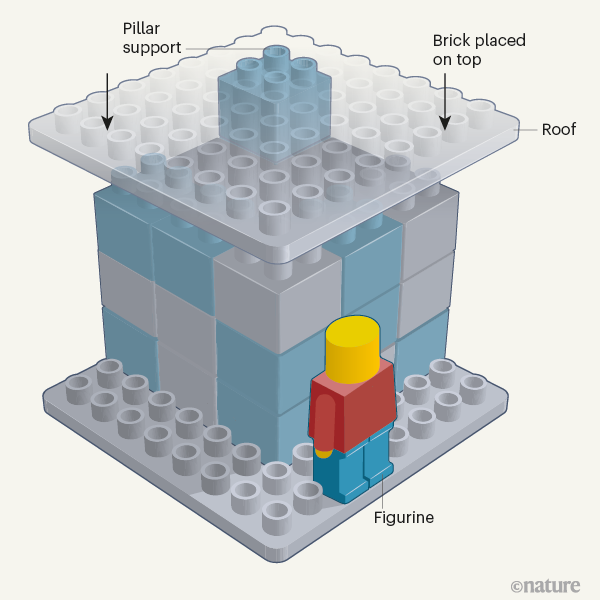Resolve by Subtraction
Jun 23, 2021 • 2 min read
How many times in your work have you found yourself facing a problem and thought that the solution might consist in adding a corrective?
Solving by addition is a very widespread attitude.
Problem-solving experiment
A series of problem-solving experiments reveal that people value solutions that add functionality more than those that remove them, even if they are more efficient.
This article published on Nature reports an experiment run with LEGO bricks: a group of people were asked to solve a stability problem for a building.

The roof presented a stability problem. Supporting itself on a single brick (the pillar support), it was enough to add one or more elements above it to make it collapse.
Most people solved the problem by adding more bricks under the roof. But no one thought of removing the existing one. Three more elements instead of one less.
when people have to choose between a range of solutions… they choose the additive solution over the subtractive
Experiment Results
The results of this experiment showed that when people have to choose between a range of solutions, they act according to a rather widespread cognitive bias: they choose the additive solution over the subtractive solution because they think that this choice will be more appreciated. The judgment coming from other people influences our problem solving choices.
I am reminded of a very frequent exchange in the design field:
“Hey, here’s a bug …“
“Ok! Now let’s add the fix … “
Cognitive effort
Thinking about additive changes requires more cognitive effort. We must in fact imagine and create something that does not yet exist.
I have already addressed the issue of the cost of design in the previous issue. All the choices we make have an impact on our surrounding environment. This is also and increasingly true in digital.
And you, how many times have you found yourself adding instead of removing looking for the solution to a problem? Feel free to write to me to share your thoughts!
More on cognitive biases
Get new articles in your inbox - subscribe to my newsletter
